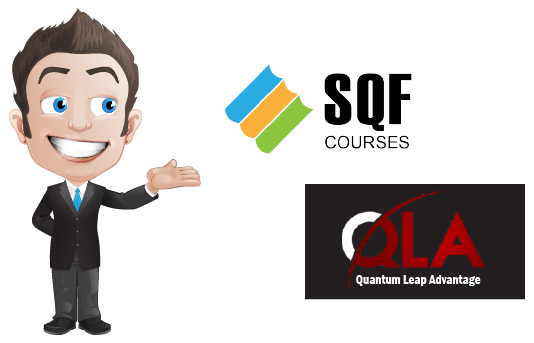Everything You Need to Know About
Building Your Dream Team
QLA vs SQF Methods Comparison

If you want to be successful as a deal maker… you’ll need to build a Dream Team!
But not just any team…
Specifically, we looked at SQF and QLA Dream Team strategies for finding a Chairman, CFO, accountants and lawyers who will do the heavy lifting for you.
They’ll all be working for you without using a penny of your own money.
You need to put together a “Dream Team”. The question is… how do you go about creating one?
We uncovered some very interesting findings….
And now it’s time to share what we discovered about the SQF and QLA Dream Team strategies.

In this article, we are going to look at how to build your Dream Team, and especially what pitfalls you should avoid when creating one and how. We will outline the importance of surrounding yourself with the right people and will look at two very different models to help you achieve this.
If you’re ready, make yourself comfortable and let’s begin...
So, you’ve sourced potential M&A opportunities and have spoken to several interested business owners over the phone. As a result of these phone conversations, you’ve had several meetings and have agreed to a deal in principle on what looks like a promising and profitable business.
After all your initial hard work, it’s now time to organize the due diligence so you can investigate and evaluate the records, assets, contracts, and operations of the business – and get your deal over the line.
But where do you start?
First and foremost, if you’re going to be a deal maker – you need to stop focusing on minutiae; that is, all the small and trivial details.
Minutiae is not an effective use of your time and is not going to make you money.
As a deal maker, there are three main areas you must focus on:
- Getting deals
- Financing those deals
- Managing those deals

You probably already know that time is the most precious commodity there is.
Each passing second is one you’ll never get back – it’s gone. You can always make more money, but you’ll never make more time. So, it’s imperative to focus your time where it’s most valuable.
- Tweet
You also need to realize:
If you’re going to be a deal maker – you CANNOT work alone.
You already know that you do not have the time to do absolutely EVERYTHING in your business. Whilst many solopreneurs love getting involved in many aspects of their business; as a dealpreneur who wants to scale, you need to think differently – you’ll need to build the ultimate “Dream Team”.
But what makes a great Dream Team? And how do you build one?
One way of looking at it is that you are driving a bus and you want to pick up as many skilled people as you can to help you on your journey. You are creating a toolkit.
By having a Dream Team around you, you can leverage their time and skills. Find out more here:
- Tweet
There are different models for how to build a team that will surround you with the required expertise, but in this article, we’re going to compare two specific methods:
- The QLA model
- The SQF model.
Before we proceed, let me make something clear. It’s absolutely essential to realize one very important factor when creating your Dream Team: structure follows strategy.
This is a concept that was brought to prominence by Alfred Chandler of the Harvard Business School.
Chandler published a book in 1977 entitled The Visible Hand: The Managerial Revolution in American Business, which highlighted the strategic decision-making processes of some of the USA’s largest corporations (such as DuPont, General Motors and Standard Oil). In short, they all adopted a common mantra: structure follows strategy.

Therefore, so should you.
If you’ve defined your goals, and are clear on your strategy about how to achieve these goals, you may now want to think about how you can leverage other people’s time in such a way that you deliver on your strategy.
Every member of your team must have a very specific role, and everyone needs to share the same vision.
- Tweet
Quantum Leap Advantage (QLA) model
Quantum Leap Advantage is Dan Peña’s high-ticket seminar for achieving success in life and business.
In this model, the Dream Team basically offers you credibility… and that’s it. It will help you have an instant track record that can be leveraged – particularly when contacting law firms, accountancy practices, and financiers; however, you’ll have to be able to convince these people to work with you. Peña only suggests high calibre firms and top-notch individuals to work with… but that’s easier said than done.

Anyway, Peña’s model structures a Dream Team as follows:
As said, a constant theme for each member of the QLA Dream Team is high-calibre, top-notch and vastly experienced.
OK, but where can you find these individuals?
There are several different methods of locating the right type of talent for your Dream Team. QLA mentees have used:
- Personal networks
- Members clubs
- Referrals
- Networking events
- Online research
Really?? Good luck with that
Anyway.
Let’s assume you reached out to them, presented your idea and proposition, and that they agreed to join you… Well, how do you afford such prodigious resources now??
Here are some ideas (which may or may not work):

If you have doubts about implementing this model, then keep reading – we are going to look at something very different…
The Stamford Quantum Formula (SQF) model
The SQF model for creating and building a Dream Team is very different from Peña’s model.
In QLA, one of the primary advantages of having a Dream Team is credibility. But because the SQF model shortcuts the entire deal-making process from sourcing, contacting and negotiating with businesses to financing and organizing due diligence, you don’t need the additional credibility. You will already have sufficient credibility from your ability to identify and execute deals quickly and effectively.


Another difference is that using the QLA model requires that you build your team BEFORE you approach any potential acquisition targets.
With SQF, you don’t have to do this. You want to ensure they are in place once you have agreed to a deal with a business owner (even though you may not need all the team for every deal), but not having a team shouldn’t stop you from going out there and finding deals in the first place!!!
The structure of the SQF Dream Team is also different and more strategic.
In addition to these invaluable specialists, there are other members of your Dream Team that you may choose to deploy for certain acquisitions, and an array of different circumstances to enhance operational, sales and marketing performance. These include:
- Non-Executive Directors
- Solid Second Tier Management
- Independent Marketing Team
- Marketing Auditor
- Sales Auditor
So, there you have it – a Dream Team, but with two very different approaches.
We’ve compared the QLA method – which focuses primarily on credibility – and the SQF model, whereby each member is brought in for a specific purpose and based on their specific expertise.
With the QLA approach, your reputation can be enhanced by association with a team of high calibre individuals… providing you can approach them and convince them to work with you (good luck with that).

Using the SQF model is proven to enable deal makers to source, generate and secure deals more quickly, whilst having the necessary experts in place for any eventuality.
- Tweet
So what is it going to be?
The choice is yours...
Choose wisely...
And now I’d like to hear from you:
What’s your #1 takeaway lesson from this SQF and QLA Dream Team strategies study?
Or maybe you have a question.
Either way, leave a comment below right now.


